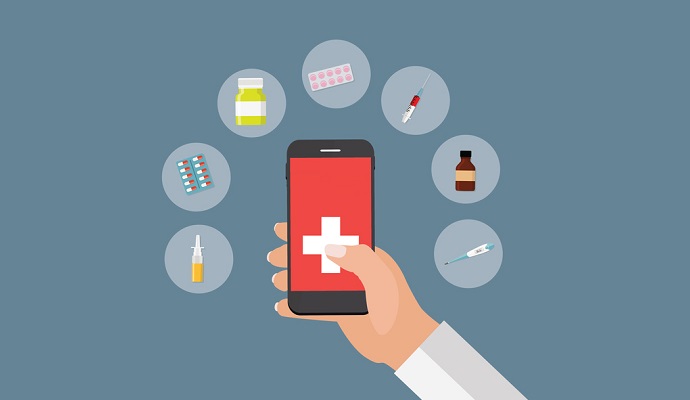Public Health Pros Use Twitter for Patient Education Messages
Social media platforms are useful for public health professionals to disseminate patient education and dispel misinformation in the healthcare space.

Source: Thinkstock
- Public health professionals are using Twitter to spread patient education and informative messages, leveraging the platform to communicate with an otherwise hard-to-reach audience, according to data published in the Journal of Medical Internet Research.
Twitter has emerged as a popular tool for public health professionals because it helps drum up energy around a certain health issue, the research team from the University of Florida wrote.
“Through microblogging, individuals not only share personal mementos, opinions, political information, and news but also promote products and information, thereby raising awareness for causes or charities,” the research team said.
“Research shows that microblogging is powerful in convincing/rallying other individuals because of immediacy, its far reach to individuals around the world, and is seen as credible because it appears in a print format,” researchers continued.
The average Twitter user is fairly young, between ages 18 and 29, the researchers reported. Racial demographics skew slightly toward the majority being African American or Hispanic. Most users also live in urban areas.
READ MORE: 4 Patient Education Strategies That Drive Patient Activation
Those patient demographics are notoriously difficult to reach, the research team explained. Twitter presents an opportunity to contact those patients where the patients already are.
“Local health departments often tweet information about tobacco cessation resources, events, frequently asked questions about immunizations, and other popular health-related topics,” the team stated. “Twitter has also been used as a means to provide sex education and to promote the use of condoms by tweeting facts on sexual health and information about local clinics that provide free condoms.”
Twitter also holds promise because of its search and reply functions, the team said. Through search, public health officials can look at different regions with high mentions of a certain disease, such as the flu. If one county has a high frequency of flu mentions, the public health official may determine that the county needs more flu shot education next season.
The reply section allows individuals to ask specific questions to public health professionals, and for those professionals to reply back. Those inquiries should be about broad public health topics, and not specific patient queries containing PHI.
An analysis of Twitter use among public health professionals revealed that these experts are using their platforms to disseminate health information.
The research team looked through Twitter accounts using the search filters “public health practitioner,” “MHP” (master’s in public health), “public health,” and “APHA” (American Public Health Association). Weeding out inauthentic accounts, official public health institutions, and those with fewer than 300 followers, the team had 15,236 tweets to analyze.
Between those over 15,000 tweets, 23 categories emerged. Health nutrition, conferences, Ebola, the Affordable Care Act, and social justice were the most common categories.
Four content themes also emerged, including educating and informing, monitoring health statuses and trends, social justice, and professional development.
The educating and informing category appeared the most useful and most prevalent, the team said. Public health officials use their platform to explain health concepts and educate patients using lay terms.
“Similar to public health organizations, public health professionals are also using Twitter to inform and educate the public,” the researchers pointed out. “These results are not surprising, as one of the main tenets of public health is to ‘educate and inform.’”
Additionally, public health professionals are using their platforms to ensure audiences are properly informed, dispelling misinformation and tackling common public health myths.
“As social media has become a main resource of knowledge for many, so has misinformation,” the researchers lamented. “With the credibility seen in microblogging, it is important for public health professionals with credentials/authority to dispel this misinformation among the public.”
For example, public health professionals were instrumental in combatting misinformation with regard to the Ebola virus.
In addition to general education attempts, public health professionals used their Twitter profiles to offer updates on specific health condition trends in a specific area.
“This also allows public health professionals to take technical research and translate it into 140 characters, or lay terms, for the public to understand and disseminate among their social groups,” the team said.
The researchers also noted the benefit of using embedded links, allowing patients to access more expanded information on a health agency’s website, for example.
The analysis also shed light on public health’s core tenet of social justice. While social justice messages were not effective in driving patient engagement, and did not arm patients with knowledge necessary to better their health, the researchers said it indicated action for health equity.
Twitter offers support for patient education, helping patients to better navigate the healthcare industry and to understand broad-reaching healthcare issues. Additionally, the tool presents an opportunity for public health professionals to advocate for health equity and equal access to treatment.
“Unlike the majority of health organizations, public health professionals’ individual Twitter accounts outside organizations are not monitored by the government, and they are able to disseminate important information to colleagues and the lay population, such as how climate change affects public health, that organizations may not be able to disseminate, despite how critical that information is to the overall public health in the United States,” the researchers concluded.
The team advised that offices lift any social media filters from their computer systems, allowing experts to deliver patient education messages outside the confines of their leisure time.
It should also be noted that social media in healthcare can be a tricky area to navigate. All healthcare professionals should prohibit any inclusion of PHI in any form of social media use, including private direct messages.
